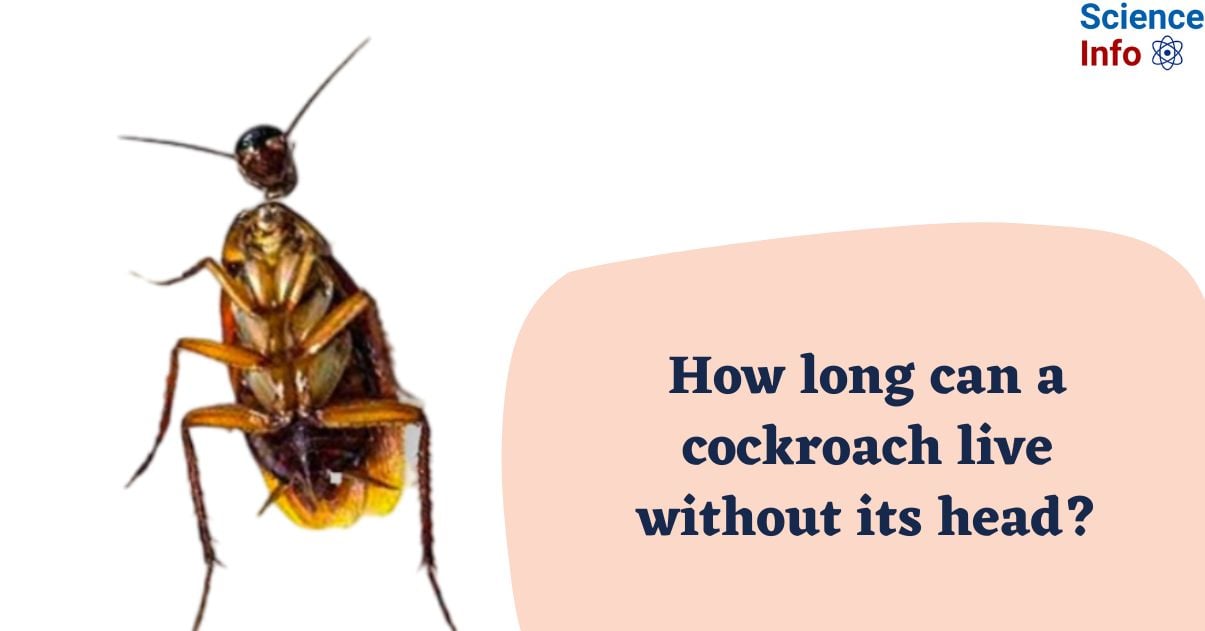People share a lot of fascinating information about cockroaches, but what is true and what is myth? Can a cockroach really survive without a head? And if so, how long can a cockroach live without its head? And how is that even possible. Let us find the answer.

How long can a cockroach live without its head?
Cockroaches can live without their heads for up to a month. In general, a decapitated cockroach can usually live for weeks without a head! The head can live for a few hours, possibly even longer if frozen.
Cockroaches can survive without a head since they don’t breathe through it, don’t need to eat frequently, and their body doesn’t need their brain to function!
Cockroaches are among the most enviable creatures on the planet, thanks to their capacity to endure a variety of life-threatening conditions unscathed. A cockroach, for example, has greater immunity to radiation than humans (albeit cockroaches cannot survive a nuclear explosion), can hold its breath for up to 40 minutes, and can go weeks without eating.
How can a cockroach live without its head?
There are five reasons a cockroach can live without its head. These conditions cause the decentralization of important body functions.
Circulatory System: The circulatory system of cockroaches is distinct from that of any other mammal. Cockroaches have an open circulatory system, which means their blood does not travel through arteries and veins. Their blood can easily reach all organs, and wounds close swiftly. This allows them to conserve all of the nutrients in their blood.
Spiracles: Cockroaches have spiracles covering their sides. Spiracles are holes in the cockroach’s body that allow it to breathe. These spiracles allow a cockroach to breathe even if it is detached from its head.

[Image source: https://www.scienceabc.com/]
Cold Blooded: Cockroaches have cold blood. Because they do not have to maintain a steady body temperature, they do not use a lot of energy. As a result, they may survive for lengthy periods of time without eating much.
Active Nervous System: Cockroaches have an active neurological system, which implies nerve tissues that control reflexes are present throughout their body. Even if a cockroach loses its head, its neural tissues will continue to operate. It can still move its body and sense what is around it.
Lower Feeding Requirements: Unlike mammals, insects may survive for weeks on a single meal. Predators and diseases pose more serious hazards to a headless cockroach. A roach can die swiftly from a mold, viral, or bacterial infection.
A cockroach, despite its hardiness, can die from dehydration or starvation. So, while cockroaches can live a very long time, they are not immortal.
Interesting Facts of Cockroaches
- Cockroaches are really old: Cockroaches are thought to have originated more than 280 million years ago, during the Carboniferous period.
- Cockroaches can hold their breath for 40 minutes: These bugs can withstand being submerged in water for half an hour. They frequently hold their breath to control their water loss.
- Newborn German cockroaches can become adults in as little as 36 days: In fact, the German cockroach is the most widespread of the cockroaches and has been linked to outbreaks of disease and allergy reactions in many people.
- A one-day-old baby cockroach can run nearly as fast as its parents: These infants are roughly the size of a particle of dust! They are not only swift, but also elusive, which is a terrible combination for a pest known to carry diseases.
- They can run up to three miles an hour: While this may appear to be a great athletic ability, it actually means that they can quickly transmit infections and pathogens throughout the home.
- The American cockroach attracts to alcohol: Like other pests, this cockroach species is attracted to some alcoholic beverages, particularly beer. The hops and sugar in the drink are most likely what draws them in.
- The world’s largest cockroach measures six inches long: This species is only found in South America and has a wingspan of one foot. Average cockroaches range in size from ½” to 2″ long.
- There are almost 4,000 different cockroach species worldwide: The most prevalent species is the German cockroach. Other cockroaches found in America include the brown-banded cockroach, the American cockroach, and the oriental cockroach.
- Cockroaches, as cold-blooded insects, may survive without food for up to a month: They can only survive for one week without water, hence they are often found in humid or high-moisture regions of the home, such as basements and bathrooms.
Video Reference
References
- https://thebuginator.com/how-long-can-a-cockroach-live-without-its-head/
- https://www.sciencefocus.com/nature/can-a-cockroach-really-live-without-its-head
- https://hicare.in/blog/how-can-cockroach-survive-without-its-head/
- https://www.scientificamerican.com/article/fact-or-fiction-cockroach-can-live-without-head/
- https://www.pestworld.org/news-hub/pest-articles/fascinating-cockroach-facts/
- https://foodsafetytech.com/column/did-you-know-a-cockroach-could-survive-for-a-month-without-its-head/
